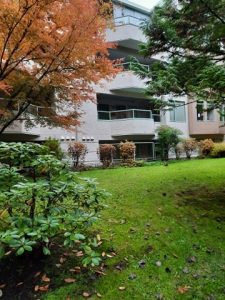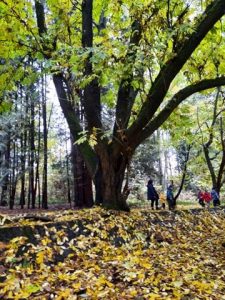Yesterday, we stumbled upon an amazing big question: “How does nature work?” Ms. Osiris wasn’t sure how to answer, because the wonder was so big, it made her head a bit dizzy, just like the character in the book we read, I Wonder.
Today, we began our investigation of this big wonder, and read the book You Are Stardust to start our thinking. We talked about how big questions like this need to be climbed in steps, so we started with a smaller question: “What is nature?”

Our brainstorming about nature.ith a smaller question: “What is nature?”
It turns out, Div. 27 knows a lot about nature! We came up with all kinds of things we knew were part of nature: trees, birds, clouds, rocks, bugs, rivers, hills, frogs, and even humans are a part of nature!
But some suggestions had us wondering: were cars a part of nature? What about clocks? Many friends knew instinctively that no, cars weren’t a part of nature, but why? What do we know about cars and pinecones that helps us determine that one isn’t nature and the other is?
We came up with a few ideas: well, a car doesn’t have eyes. Hmmm… rocks don’t have eyes and they are part of nature. A car doesn’t have branches. Well, worms don’t have branches and we know they are nature. What is different about some things that tells us they aren’t a part of nature?

Guiding questions for our walk.
We couldn’t quite figure it out, but luckily, we were headed to the forest in the afternoon, so we could do some investigating there. We set out with three questions in mind:
- “What is nature?”
- “What is not nature?”
- “How do we know the difference?”

We knew that this building wasn’t part of nature. But why not?
On our walk to the edge of the forest we could point to many things that were a part of nature: trees, leaves, clouds in the sky. We came across two things that had us stumped: a wooden fence and a house. Hmmm… both are made from wood, and wood is a tree, so are fences and houses nature? We felt like they weren’t, but couldn’t yet express exactly why that was.

Nature? Or not nature?
At the edge of the forest, we found something that helped us figure out the answer. Next to a bench, there was a rock embedded in the ground. On it was painted a heart. Hmmm… is it nature or not nature? We knew that rocks were nature, but we also knew that the paint wasn’t; someone painted the heart onto the rock. The bench next to it was also put there, and someone had to make the bench.

Hmm… how to classify this tree?
We reflected on our other examples of “not nature”… someone made the house we saw, a person had to make the car and the clock… That’s it! Things that are “not nature” were made by humans!
But our clarity didn’t last long. Pretty soon we were wondering about our favourite naked tree on the edge of the path. The tree itself is nature and it’s still rooted into the ground. But we noticed on the top that it’s been cut by a human. So is it nature or not?
Uh oh. Things weren’t so clear anymore. Friends had different ideas about how to classify certain things, which led to some wonderful scientific debate.

Jack-o-lanterns!
When we arrived at our favourite spot, we had a surprise in store: a whole row of jack-o-lanterns! Wow!

A plant… but also carved by a human…
So then we asked: were the jack-o-lanterns part of nature? One friend was convinced they were, because, after all, pumpkins are plants and a part of nature. But another friend thought that no, they weren’t, because a human had to carve them and put them there, so they weren’t a part of nature. Or maybe they were both?

The great chair debate happening in the background!
At one point, we were even questioning if a chair could be nature! We found a stump that made a great spot for sitting, so if we can sit on it, is it a chair, and if so, then this particular chair must be a part of nature, since it’s rooted in the ground. But other friends disagreed, and we got to think through this brain dizzying question together.
The great thing about science inquiry is that the process of asking the questions and thinking through possible answers can lead us in all different kinds of directions. In science, we can discuss our ideas with our friends, and sometimes we may come to different conclusions. The key is to work on expressing the “why” of our thoughts, and reflecting on our observations and ideas.

A candle on the ground: not nature.

Nature or not nature? Or both? We all had different ideas!
Div. 27’s nature inquiry is off to an amazing start!
Leave a Reply